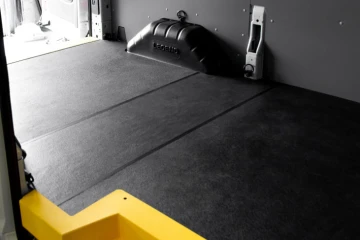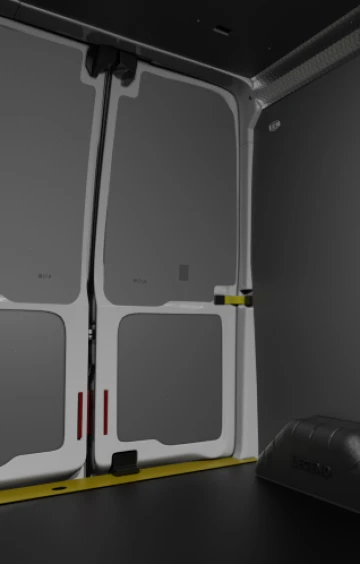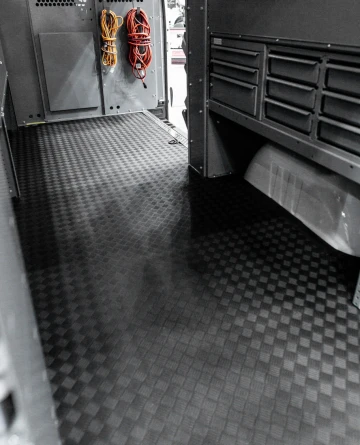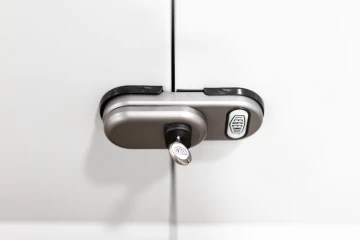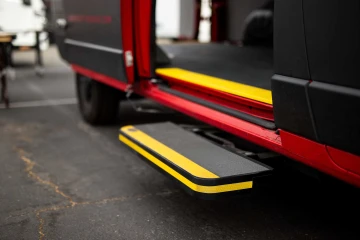3 Apr 25
Face off: TempShield vs SprayFoam vs Batt Insulation - What is the Best Way to Insulate Your Work Van?
Your van is more than a vehicle. It’s your mobile office, your toolshed on wheels, your business partner on every job. And when it comes to keeping that van comfortable, safe, and efficient—insulation plays a bigger role than most people realize.
We’re not just talking about staying warm in the winter or cool in the summer. Proper insulation protects your gear, improves ride comfort, extends the life of your vehicle, and even saves you money on climate control. In fact, a well-insulated van can stay up to 28°F cooler than a bare metal one after just a few hours in the sun.
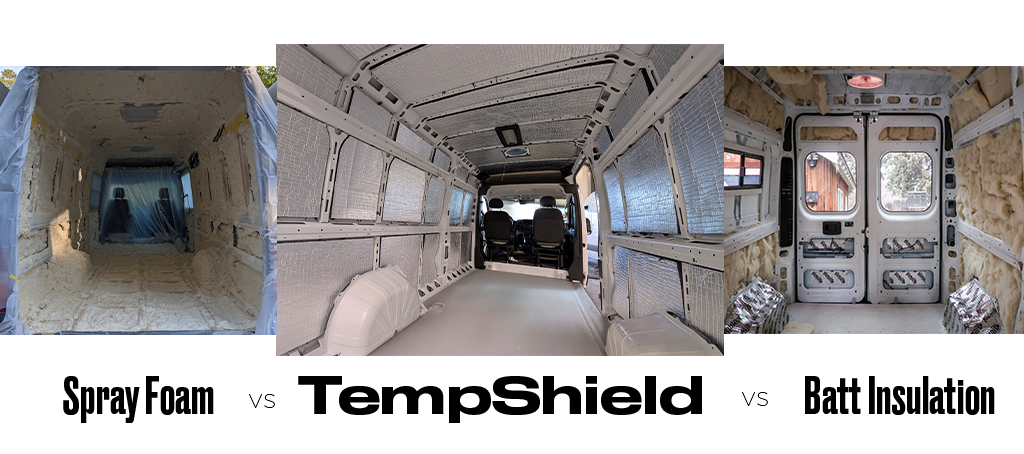 Three options dominate the conversation: Spray Foam, Batt Insulation, and Legend’s TempShield. Each has its place. But which one belongs in your van?
Three options dominate the conversation: Spray Foam, Batt Insulation, and Legend’s TempShield. Each has its place. But which one belongs in your van?
Ease of Installation: TempShield
time is money
Imagine pulling up to your warehouse in the morning, grabbing a box off the shelf, and by lunch, your van is fully insulated. That’s TempShield. As simple as:
Peel
Place
Press
It’s designed to fit between your van’s ribs with no tools, no pros, and no downtime.
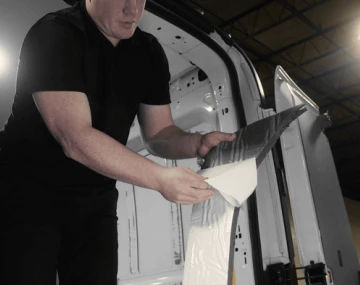

For Batt Insulation, you’ll spend hours measuring, cutting, and stuffing material into cavities—and you’ll need safety gear to handle the loose fibers.
This approach also typically involves adding plywood to keep Batt in its place and safe from shifting cargo, which makes the process even more cumbersome.
It’s a classic weekend warrior project, not exactly fleet-friendly.
.jpeg)
.jpeg)
Then there’s spray foam.
It works, but it’s messy, expensive, and requires specialized equipment along with (ideally) a professional who knows how to do it without harming your van.
A single van can be out of commission for a full day, and if you’re not careful, excess foam can even warp your van’s metal panels.
R-Value: Spray Foam
Spray foam comes with a catch
Insulation is only as good as the heat it stops. Spray foam leads the race on paper with an R-value of 6–7 per inch. But the story doesn’t end there.
TempShield alone offers an R-value of 4–5—already competitive—but when paired with DuraTherm wall liners, it climbs to an impressive R-11. Plus, TempShield includes a foil layer that reflects radiant heat, something spray foam doesn’t touch.
Batt insulation lags behind. It ranges from R-3.5 to R-4, but real-world performance often drops due to compression or gaps caused by shifting during transit.
The Legend Insulation Combo leads the market with R-Value up to 11. Further, Legend walls are engineered for maximum insulation, including a gap between DuraTherm & TempShield to trap and absorb temperature - keeping your interior cool and snug!
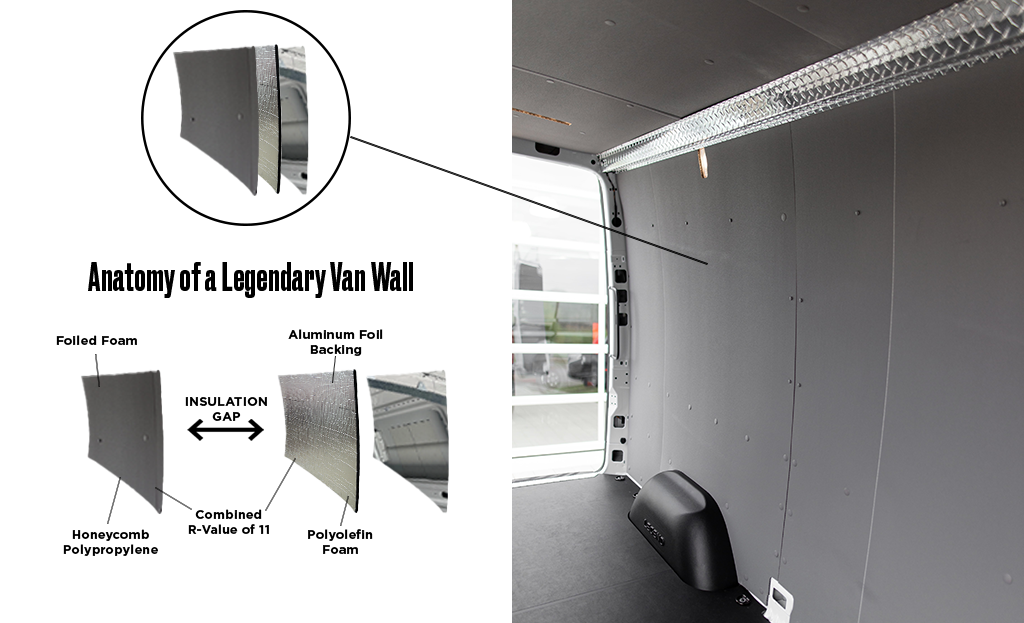
Real-World Results: TempShield
Numbers don’t lie
On paper is one thing. In the field is another.
We ran a simple test: park three vans side by side in a hot, controlled, testing environment.
After six hours, the bare van hit 130°F. The TempShield-equipped van? Just 102°F. That’s the difference between sweat-drenched seats and a cool, breathable workspace.
Time (hours) | Ambient Temp (°F) | Bare Van (°F) | With DuraTherm (°F) | With DuraTherm + TempShield (°F) |
0 | 80 | 80 | 80 | 80 |
2 | 87 | 105 | 92 | 88 |
4 | 95 | 120 | 102 | 96 |
6 | 100 | 130 | 110 | 102 |
Spray foam comes close if it’s applied perfectly, but that’s precisely the catch. Here’s a real world test run by infraredtraining.com, where they test the insulation capabilities of spray foam using a blower door and infrared cameras to measure.
Primary conclusions included the extremely common air leakages which occur through gaps (that even professionals in such a controlled environment weren’t able to avoid, let alone a technician hired by a van fleet).
Batt insulation has its benefits on paper, but when it comes to performance in real-life applications, Batt struggles to hold the line. This is primarily due to its sagging and misalignment, which creates tons of gaps in the insulation for temperature to leak through.
Not to mention all the extra work one must go through when having to cover up this insulation with plywood. This is to be expected as Batt is meant for house insulation rather than moving cargo vans.
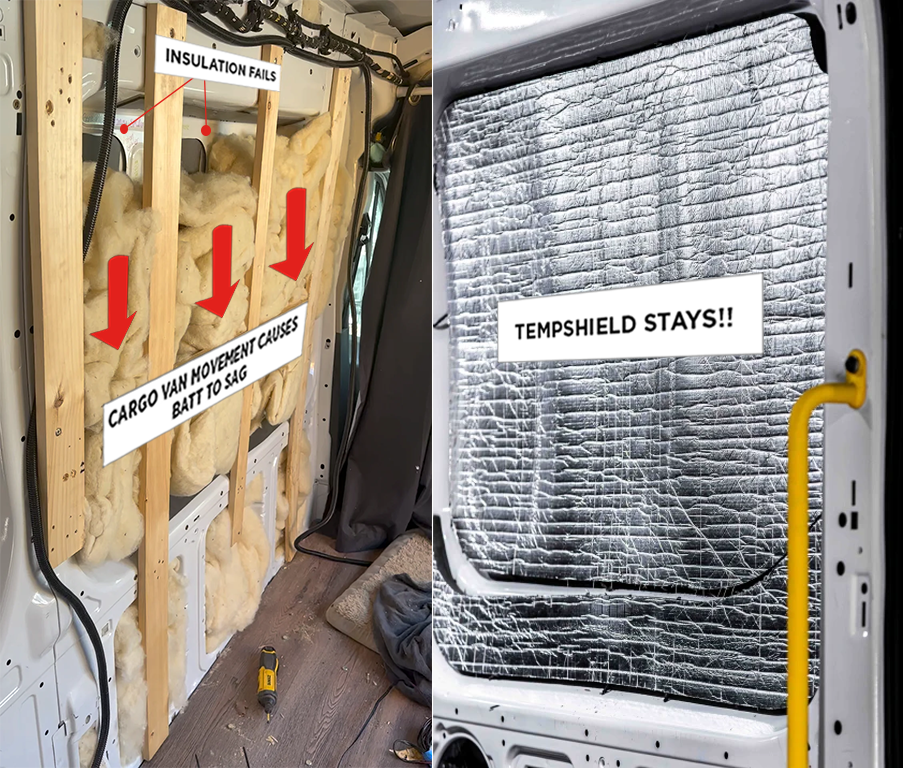
Cost: Batt Insulation
INSTALL TIME MAKES A DIFFERENCE IN THE BOTTOM LINE
Let’s talk numbers. Spray foam is the pricey option, starting around $1200–$1500 per van—and that doesn’t include downtime or labor, which there will be a ton of (if you want to avoid damaging the van). Batt insulation is the cheapest option ($800–$1100) but makes up for it in install time and added material needs.
TempShield sits comfortably in the middle: $900–$1350. But here’s the kicker—it can be installed in-house in just a couple hours, meaning no added labor and no days lost waiting on a contractor.
Insulation Type | Price Range | Installation Type |
|---|---|---|
TempShield | $900–$1350 | DIY (Peel & Place) |
Spray Foam | $1200–$1500+ | Professional (Special tools) |
Batt Insulation | $800–$1100 | DIY (Cut, Stuff, Secure, Add Plywood Cover) |
Moisture & Condensation: TempShield
Preventing Mold, Rust, and Long-Term Damage
Condensation is a quiet killer. Moisture seeps in, rust takes hold, and mold builds in the walls. TempShield was built with this in mind—closed-cell foam that repels water and doesn’t absorb moisture.
One particular company came to Legend with a similar problem. British Gas is one of the largest van fleets in the UK, and they often ran into issues with condensation forming on the top of their vans (damaging the equipment below). See below how Legend solved this problem for them completely:
Spray foam can help too and usually won’t have any problems—if applied evenly. But the moment gaps form or excess foam traps water between the metal and insulation, you’ve got a hidden problem. This is one of the many reasons it’s always recommended to consult with an experienced technician for spray foam insulation.
Batt insulation is the riskiest approach in this regard. It absorbs moisture readily.
Unless installed with a perfect vapor barrier and top-notch ventilation, it invites mildew and corrosion.
Furthermore, there have been many cases of insects and pests growth as a result.
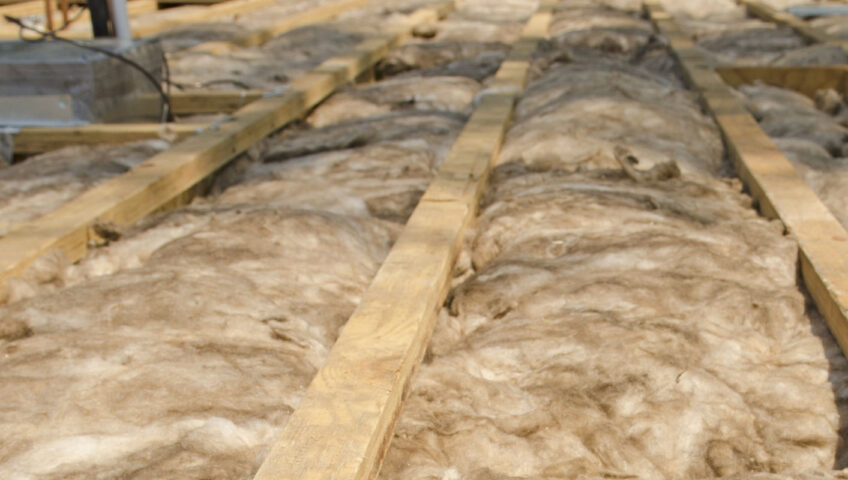
Durability and Maintenance: TempShield
Work Vans Get Wear & Tear
Every bump, turn, and cargo load puts stress on your van’s interior. TempShield was made to handle it. It doesn’t shift, sag, or settle—and if you ever need to swap a panel, just peel it off and replace it. Moreover, combined with the strong protective qualities of DuraTherm, you can rest assured that your insulation will remain safe and untouched.
Spray foam, once cured, is solid—but rigid. It doesn’t flex with your van, and if something breaks, you’re cutting out hardened foam.
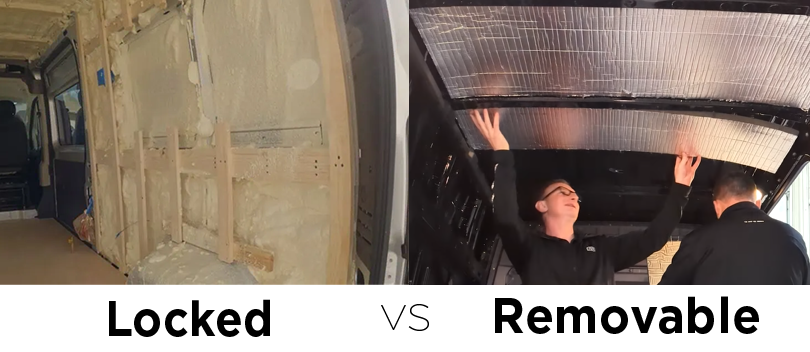
As mentioned before, Batt insulation can compress, collapse, or get eaten by pests if untreated. It’s soft, and soft doesn’t last in hard-working vans.
Environment: Batt Insulation & TempShield
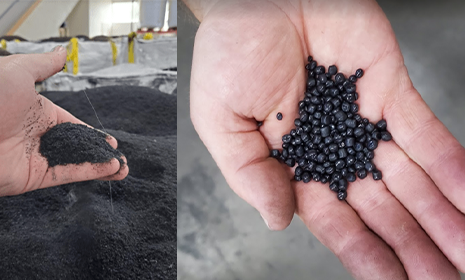
Batt insulation often leans green—many types are made from recycled or natural materials. But they usually require chemical treatments to prevent mold or pests.
TempShield is also entirely recyclable. It’s low-waste, long-lasting, and creates no harmful emissions during install. This is in line with Legend’s sustainability efforts (saving equivalent of 550 million grocery bags through our sustainable practices).
Spray foam is petroleum-based, not recyclable, and high in emissions, easily making it the worst contender in this category.
Hazard & Health: TempShield
Insulation shouldn’t come at the cost of safety. Spray foam emits VOCs, needs ventilation, and can even warp van walls if overapplied. Some types are also a fire risk near wiring.
.avif)
Batt insulation might seem gentle, but it sheds airborne fibers that irritate skin and lungs—and often needs chemical treatment to prevent pest problems.
.webp) TempShield? It’s clean, non-toxic, safe to touch, and requires no special gear. No fumes. No damage. No guesswork.
TempShield? It’s clean, non-toxic, safe to touch, and requires no special gear. No fumes. No damage. No guesswork.
.png) The Verdict: Why TempShield Wins
The Verdict: Why TempShield Wins
Each insulation method has its place:
Spray foam is best for specialized builds that demand maximum & PERMANENT insulation, where budget and downtime aren’t a concern—and expert application is guaranteed.
Batt insulation works well for DIYers and vanlife hobbyists who want an eco-friendly solution and have time to manage install and maintenance.
But for working vans that stay on the road, TempShield is the clear choice. It's designed for speed, durability, and real-world performance. It resists moisture, installs fast, and performs reliably day after day—whether you're managing one van or an entire fleet.
Ready to see TempShield in action? Watch our video walkthrough on YouTube and get a firsthand look at how easy it is to insulate your van the right way.
Share Article





